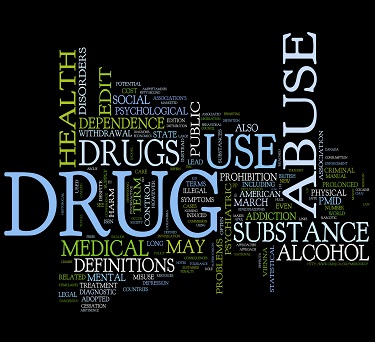08 Oct 2013
Baby Boomers And Addiction – Part 1
As our nation’s largest generational group reaches retirement, new concerns spring up around the mounting rates of addiction in this large and aging demographic. The baby boomer generation, by dint of sheer numbers, has long influenced the trends and direction of the U.S. in almost all areas of life. Though young people may have the corner on the cutting edge, it is the people born post World War II between 1946 and 1964 that either respond or don’t respond to the prevailing culture. How are the patterns and needs of baby boomers in addiction and recovery shaping the field of treatment and rehab? How do we handle addiction in an aging population? What special approaches should be taken?
Spare Time – Anxiety, Depression And Alcoholism
 As baby boomers progress in the life cycle, professionals are seeing them forge wide paths into the realm of substance abuse, primarily alcoholism. As this population ages and retires, they face obstacles not nearly so prevalent in their parents’ generation. Many, for example, will live many years beyond retirement—how will these years be spent? Many have poured themselves into careers with workaholic ardor—now what shall be done with the spare time? Rates of anxiety and depression have also skyrocketed among boomers, making them a fertile breeding ground for substance and process addictions.
As baby boomers progress in the life cycle, professionals are seeing them forge wide paths into the realm of substance abuse, primarily alcoholism. As this population ages and retires, they face obstacles not nearly so prevalent in their parents’ generation. Many, for example, will live many years beyond retirement—how will these years be spent? Many have poured themselves into careers with workaholic ardor—now what shall be done with the spare time? Rates of anxiety and depression have also skyrocketed among boomers, making them a fertile breeding ground for substance and process addictions.
And now the challenge faces medical and mental health professionals: How to meet the mental health and addiction treatment needs of the aging baby boomers? What trends will arise and what challenges will manifest?
Recently, The New York Times addressed the issue in its health section through a two-part Q&A with Dr. Barbara Krantz, medical director of an addiction treatment center in Florida. “Advice on Addiction in Boomers,” Part 1 and Part 2, were responses to questions from individuals concerned about their own drinking patterns or those of a partner, as well as adult children unsure of how to handle parental alcoholism. Krantz describes some of the unique needs, challenges and solutions surrounding the issue of addiction in the baby boomer population.
Unique Patterns And Needs In Baby Boomers
While the fundamental recovery principles are essentially universal and change little from person to person or generation to generation, professionals in addiction and recovery recognized that boomer addicts could benefit from a treatment plan that was more holistic in its approach—one that aimed to speak to them and their unique perspective, cultural mindset, and experiences.
Dr. Krantz details the rationale behind the development of a treatment approach geared specifically to baby boomers:
“We created a specific program for baby boomers because their socialization and culture created unique issues that need to be addressed. Many boomers grew up at a time when there was a cultural acceptance of drugs and alcohol. It was a time when authority was questioned and knowledge was sought. Woodstock, the Vietnam War and other important generational elements are critical to note in treating them. It’s also important to approach boomers on an intellectual level. They need to fully understand why we approach treatment the way we do, because they search for knowledge and understanding rather than passively accepting authority.”
Addictions Beginning Later In Life
While many boomers perhaps never manifested addictions in mid life, the retirement years often present a fertile breeding ground for the development of an addiction or the exacerbation and escalation of what might have been previously termed “heavy drinking.” New stresses arise at this age. Marital problems come to the forefront when the children have finally left the nest. There are economic strains resulting from a depressed economy, late in life job loss, uncertainty about Social Security and how long retirement funds will last, hormonal changes, the illness or loss of a spouse, scattered social connections leading to isolation and loneliness, the unstructured schedule of retirement life, and the perceived loss of one’s sense of purpose. The rise of depression and anxiety is also a factor. Significant numbers of baby boomers are taking prescription drugs in an attempt to manage one or both of these conditions.
Untreated mental illnesses as well as the life conditions listed above have frequently led boomers to turn to a substance or process addiction for “support.” Certainly, as a demographic, they are not unique in this—people have been turning to alcohol to deal with the stresses and tragedies of life for centuries. But because of the greater size of this age group, treatment professionals face greater numbers of incoming patients.
Stories appear in the news on nearly a daily basis describing a trendy new drug, the explosion of a meth house, overdose deaths or some other tragic event due to drugs, alcohol and addiction. It can be hard to take away the real facts from these stories. To know what is really happening in the U.S. when it comes to drug and alcohol abuse, statistics and solid facts are helpful.
 Every year the National Survey on Drug Use and Health (NSDUH) questions a random selection of close to 70,000 Americans. All participants are 12 years and older and the purpose of the survey is to estimate how many Americans are using various illicit drugs, prescription drugs, alcohol and tobacco, and how they are using them. To get accurate data in this way helps with the implementation of preventive programs and treatment offerings for substance abusers. The study is conducted every year so that trends can be established.
Every year the National Survey on Drug Use and Health (NSDUH) questions a random selection of close to 70,000 Americans. All participants are 12 years and older and the purpose of the survey is to estimate how many Americans are using various illicit drugs, prescription drugs, alcohol and tobacco, and how they are using them. To get accurate data in this way helps with the implementation of preventive programs and treatment offerings for substance abusers. The study is conducted every year so that trends can be established.
The most recent NSDUH provides data for 2012. The latest results of the survey give a picture of drug and alcohol use in the U.S. that some may find surprising. Trends in the use of specific drugs show which are decreasing and which are exploding in popularity. The results also show trends in the ages of drug users, the prevalence of binge drinking and attitudes toward smoking.
Binge Drinking On The Rise
Binge drinking is on the rise and is considered a type of substance abuse. The Centers for Disease Control and Prevention define binge drinking as having five or more drinks within a two-hour period for men, and four or more for women. This level and rate of drinking elevates a person’s blood-alcohol content to 0.08.
According to the NSDUH data, more than half of Americans are drinking. That represents over 130 million people. Of those, one quarter, or around 60 million people, binge drink. Not only does binge drinking have serious health consequences over the long term, it can also result in immediate problems, such as drunk driving and accidents.
Spike In Heroin Use
Methamphetamine, commonly called crystal meth, speed, or just meth, is a dangerous, destructive and highly addictive drug. Not only does the drug destroy lives through addiction and health problems, the way in which much of it is made has harmed or killed people. Meth is a drug that can be made with household chemicals and drugstore buys. For this reason, a decade ago, meth labs cropped up around the country and came with poisoning fumes and accidental explosions. The good news from the survey is that use of meth is decreasing. Nearly 731,000 people used meth in 2006, and for 2012 the number dropped to 440,000.
The bad news is that use of heroin is rapidly rising. Another very serious drug, heroin is extremely addictive and has the potential to cause an overdose on the first try. The number of Americans using heroin, according to NSDUH, doubled between 2007 and 2012, from 373,000 to 669,000.
Drug Use Among Baby Boomers Is Increasing
Drug use among the baby boomer generation is on the rise. Compared to a decade ago, the number of adults between the ages of 50 and 64 using drugs doubled. Among those aged 55 to 59, the rate tripled. Americans in this age group were young during the 1960s when drug use exploded. As they age, these people are still using drugs to some extent. They are using more than the generation before them ever did.
Having accurate information from the NSDUH is crucial in developing policies, substance abuse prevention plans and treatments for addicts and abusers. The survey information provides an accurate glimpse of what Americans were doing in 2012 and also how behaviors are changing. Some of the news was good: the number of teenagers smoking cigarettes has been cut in half over the last 10 years. Some news, though, like the explosion of heroin use, is less promising.
25 Nov 2012
Drug Abuse Can Strike At Any Age
Drug abuse isn’t relegated to a youthful demographic. The public perception is that older folks have either never had a drug problem or have dealt with it in their youth and moved on. But grandparents and great-grandparents of the millennial generation are popping pills in larger numbers than ever, and it’s not over-the-counter meds, it’s illicit and prescription drugs.
Read More
28 Mar 2012
A Need For Drug Rehab For The Elderly
Twenty-five percent of America’s prescription drugs are taken by the elderly-a group that only covers fourteen percent of the nation’s population. With age comes multiple ailments that require multiple medications, a jumble of drugs that interact and interfere with each other. With all of those medications comes the risk of overdose and drug abuse.
Read More
15 Mar 2012
Rising Need for Drug Rehab Among the Elderly
The elderly are not usually the first demographic which comes to mind when thinking about problem drug use. It certainly is not a subject which has gained widespread attention. Nevertheless, the elderly are a definition risk group for alcohol and drug addiction and, as the general population has begun aging, the rate of substance abuse among the elderly has also been steadily rising.


